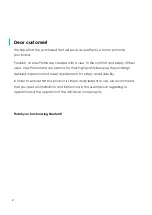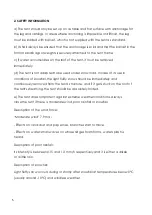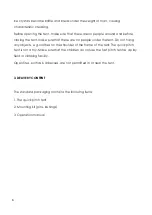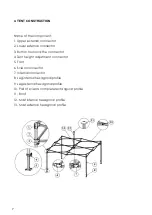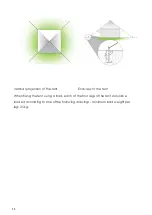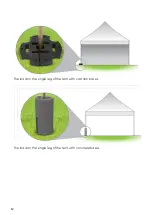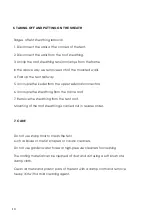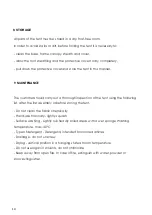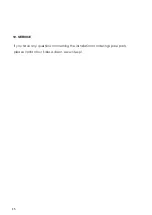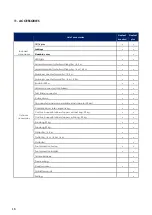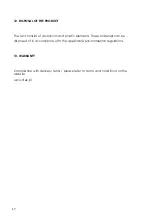
10
9. Mount the walls with Velcro fasteners to the tent roof sheathing and then to the
legs of the tent frame, wrapping the Velcro around the legs of the tent. Then
connect the tent wall with the adjacent walls on the corners of the tent (solid walls,
with windows or doors fasten according to your own configuration).
10. Anchoring method:
Standard
EN 13782:2007
applies to the 3 x 3 m Neotent Plus tent.
In order to ensure tent resistance to wind gusts with a speed of 28m/s (100km/h)
according to the standard
EN 13782:2007
all 4 side walls of the sheathing must be
fitted or none of the side walls must be fitted. The tent fixings described below
should also be used.
A) To use the tent in a hard terrain (concrete) under conditions
described in the standard, each leg should be loaded with a minimum weight of
25kg or screwed to the ground with HILTI, HSA M6 L=50mm anchors. The anchoring
of lashings must be carried out using the HILTI, HLC EC M8 L=40mm anchor
B) In order to use a tent in grassland (compact soil) under the conditions described
in the standard, each leg must be loaded with a minimum weight of
25kg or screwed to the ground using 8mm diameter anchors anchored in the
ground to a depth of 32cm. The anchoring of lashings should be made at an angle
of 45 degrees to the tent, using a steel anchor with the diameter of
24mm and 90cm long, anchored in the ground to a depth of 80cm at a right
angle. Details of the anchoring are shown in the drawings below.
ATTENTION: HILTI anchors are not standard equipment for the tent.
Foundation
Anchoring of the tent's leg base
Anchoring of the
lashing
at an angle of 45
॰
Concrete
HILTI anchor, HSA M6 L=50mm
or a ballast of 25 kg. (e.g. concrete
block)
HILTI, HLC EC M8 Anchor
L=40mm
Ground
Steel anchor Ø 8 mm anchored to a
depth of 32 cm or ballast 25 kg
(e.g. concrete
block)
Steel anchor Ø 24 mm
anchored in the ground 80
cm


